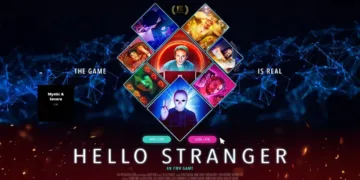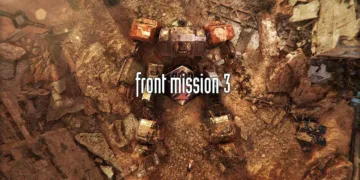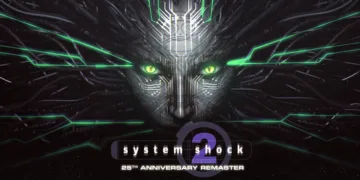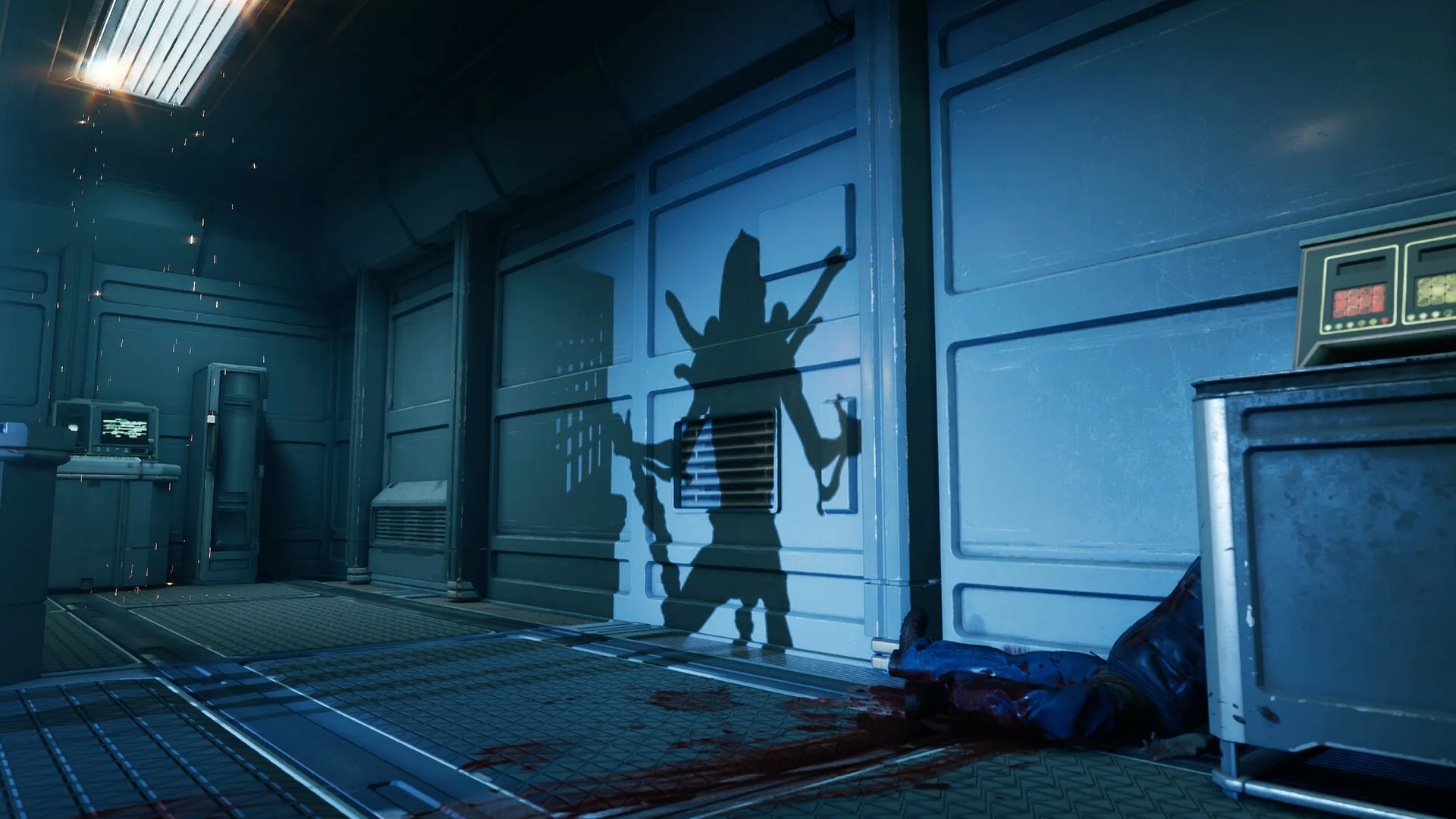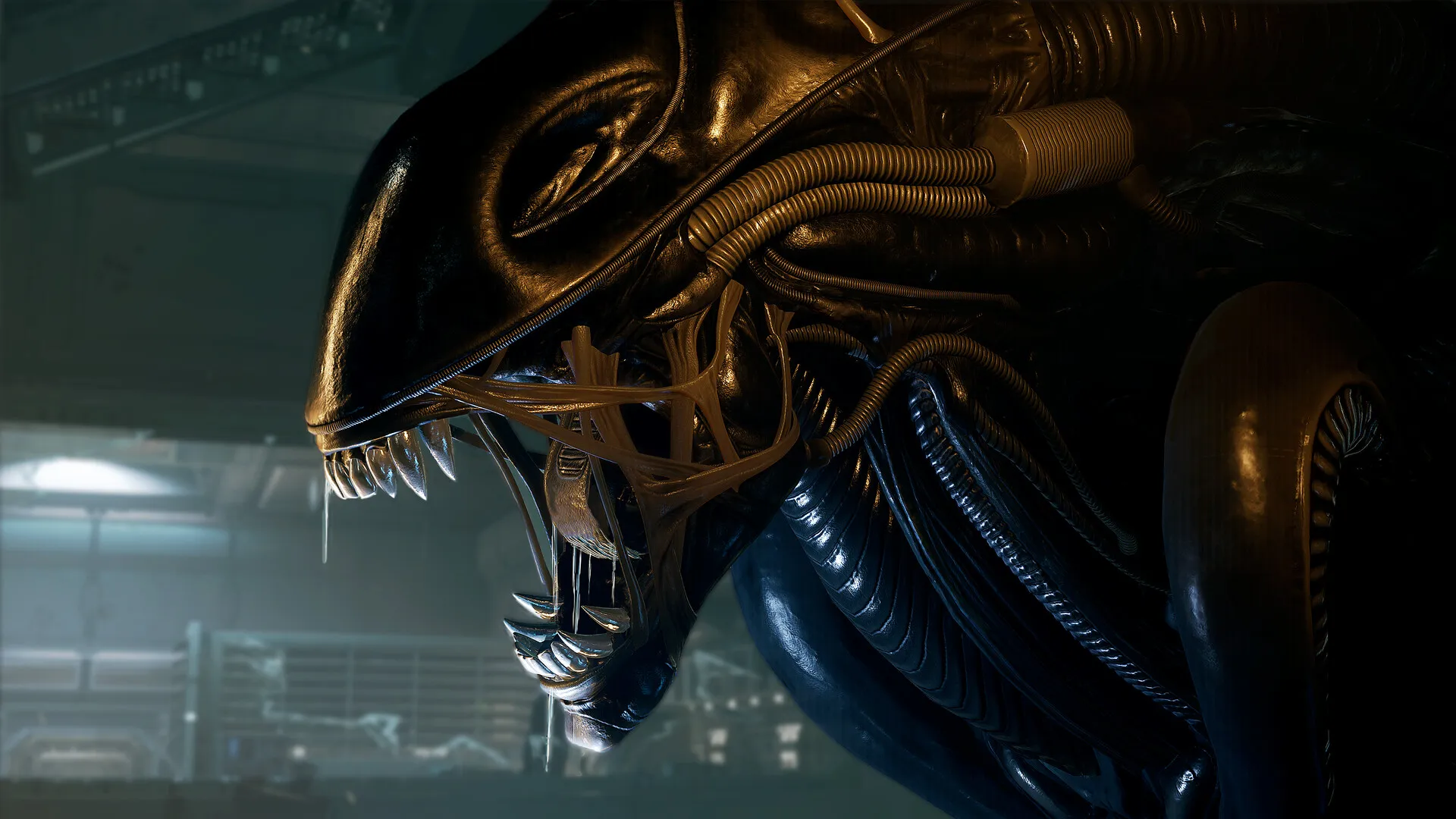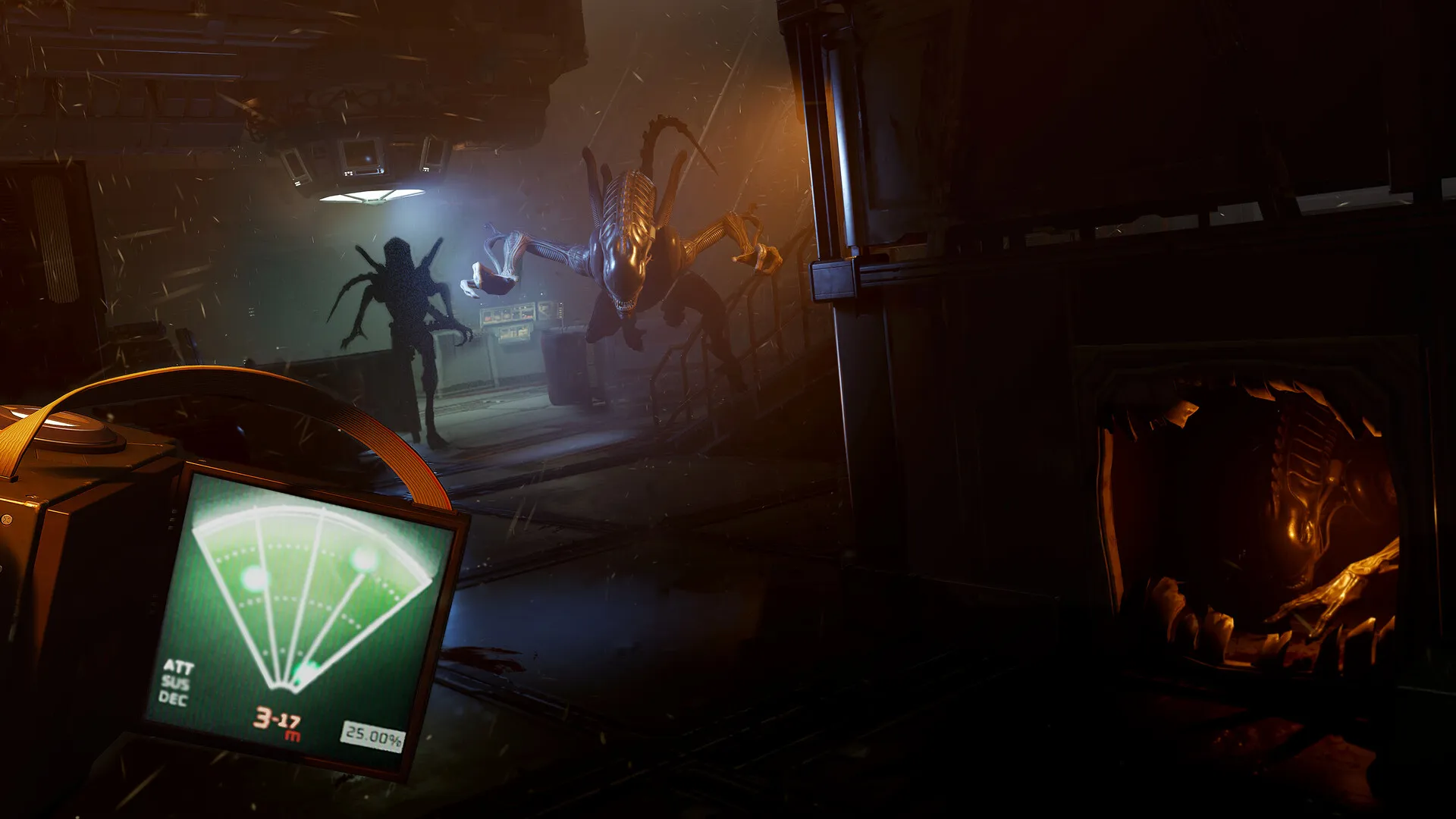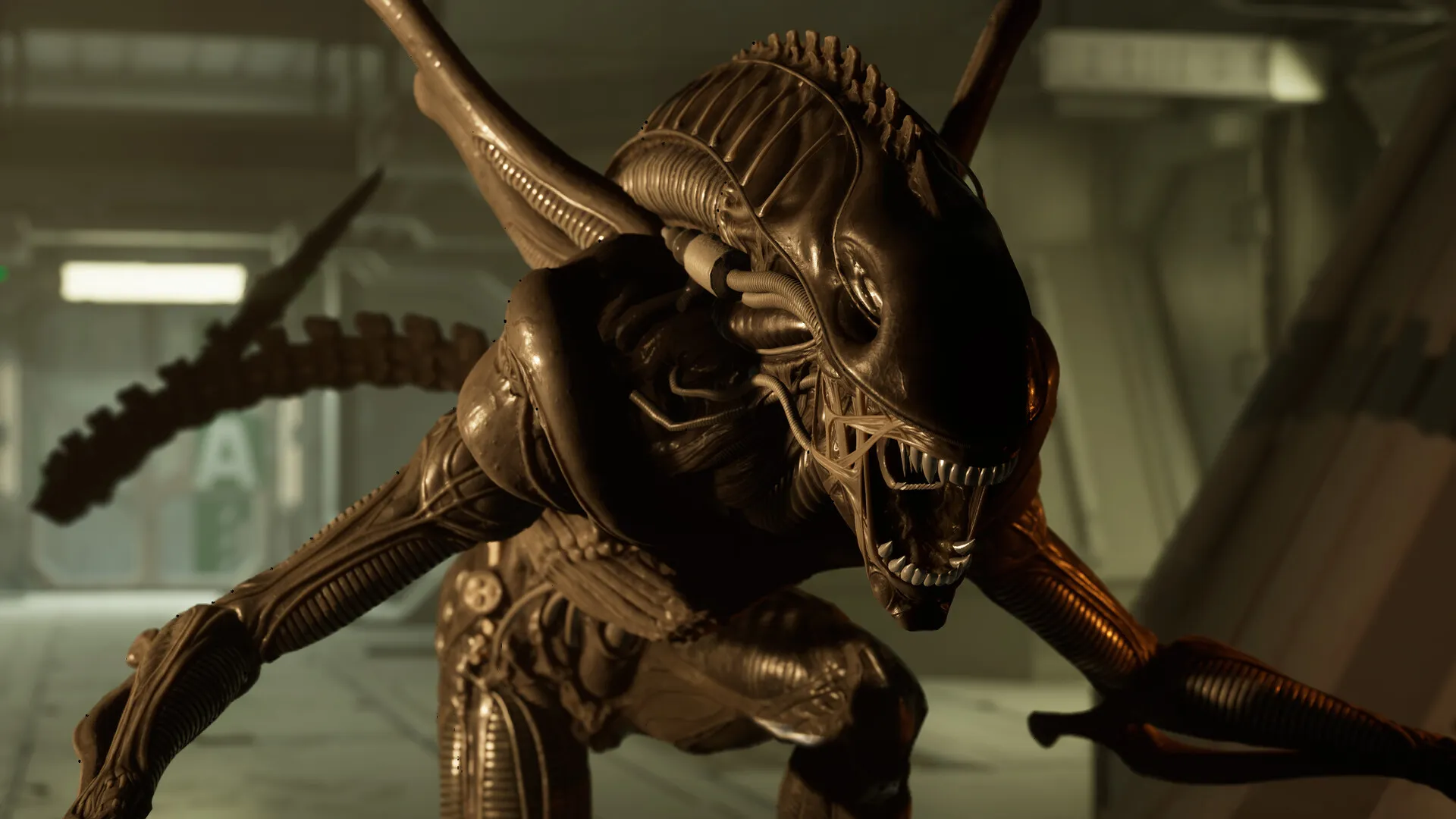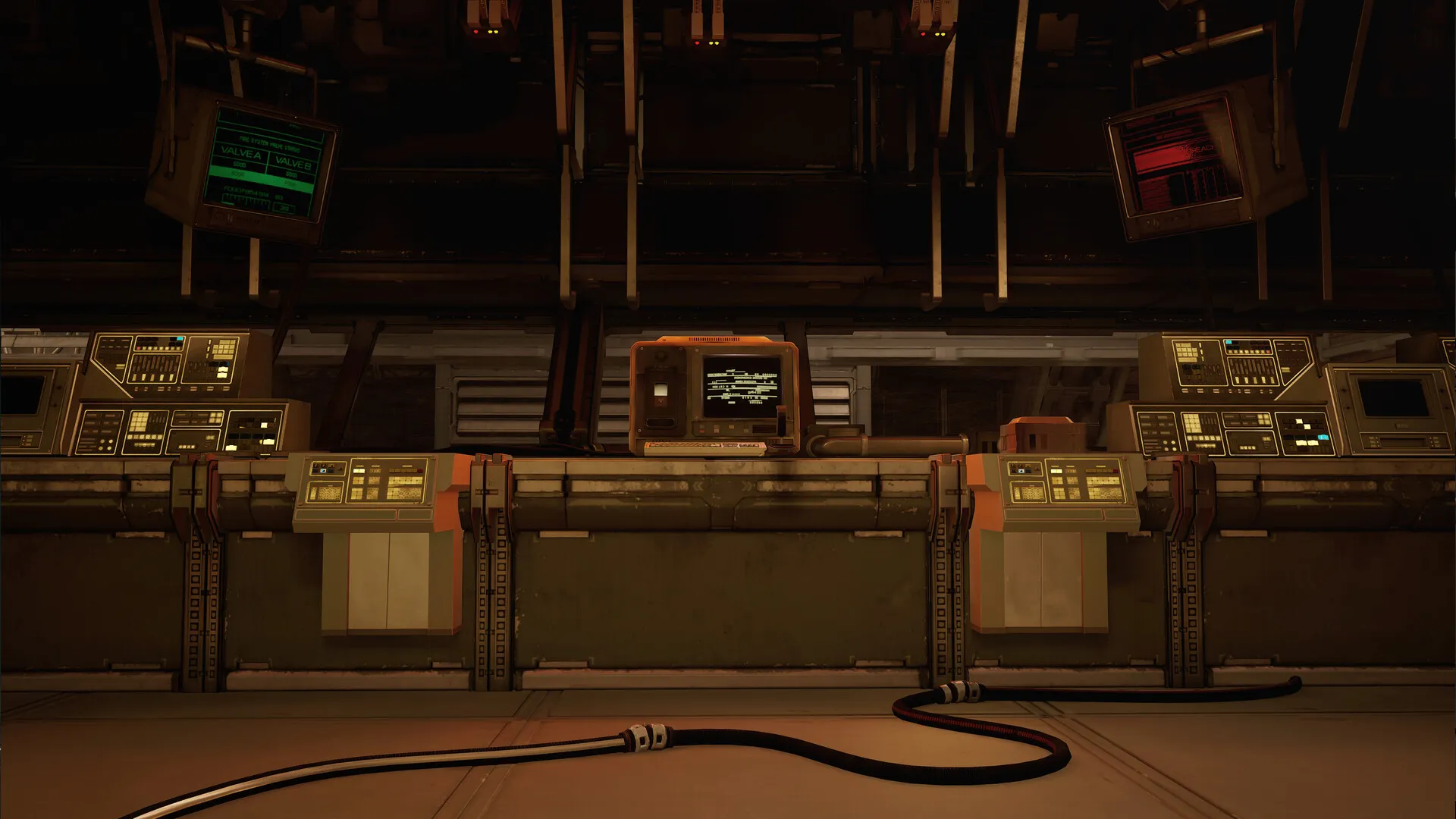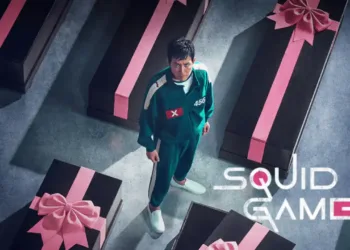Alien: Rogue Incursion successfully immerses players in the renowned Alien universe with intricate landscapes that pay homage to the flicks. The abandoned research facility on the frozen planet of Purdan shares the unsettling aesthetics of LV-426, with cold, snowy vistas and gloomy interiors that feel both familiar and terrifying.
Survios has painstakingly recreated each site, using complex textures and realistic lighting to evoke a sense of fear. Shadows flicker ominously, and the interplay of light and shadow heightens the tension, transporting players to a world where danger lurks around every turn. This emphasis on visual realism improves immersion and encourages players to explore the locations, making them feel like active participants in a living, breathing horror narrative.
The acoustic design of Rogue Incursion is also impressive, emphasizing the immersive experience. Ambient sounds, such as metal creaking, vent hissing, and distant growls from xenomorphs, create a frightening soundtrack that puts players on edge.
These auditory cues dramatically increase the game’s tension, as players are frequently left unable to discern whether the sounds indicate immediate danger or are simply the eerie echoes of the facility. The music score amplifies encounters with xenomorphs by using heart-pounding crescendos to convey an approaching threat. This auditory layering is reminiscent of Alien: Isolation, where sound plays an important role in creating tension and fear, ensuring that every moment is immersed in a terrifying atmosphere.
A Deep Dive into Gameplay Mechanics
In Alien: Rogue Incursion, the fighting system is a mixed bag, with many weapons that evoke the franchise’s iconic armaments but frequently fall short in execution. Players can use a Pulse Rifle, a pump-action shotgun, or a six-shooter revolver. With its automatic fire, the Pulse Rifle is an outstanding option, reminiscent of the weaponry wielded by colonial troops in the movies.
However, the VR targeting mechanics limit the effectiveness of these weapons. The Pulse Rifle, for example, has a notorious kick that may launch rounds into the ceiling if players aren’t careful, necessitating both hands to stabilize shots. This requirement complicates encounters because players must juggle the motion tracker in one hand while attempting to fend off xenomorphs with the other, leading to frustrating encounters that reduce the moment intended in these high-stakes settings.
Two-handed weapon handling can feel awkward, particularly when quick reflexes are required. Unlike other VR shooters that streamline combat with straightforward controls, Rogue Incursion can feel bogged down by its mechanics, making players more worried about managing their arsenal than fighting with its horrible adversaries.
The game also includes a variety of gadgets that add depth to the gameplay, particularly the motion tracker, which is required for identifying hidden xenomorphs. This device increases the sense of vulnerability because players must rely on its beeping alerts while being aware of their surroundings.
The hacking terminals add a layer of interactivity by allowing players to affect the environment. However, these moments might disrupt the flow of the action. While hacking adds a puzzle element, the execution frequently appears simplistic. It can detract from the immediacy of the moment, reminiscent of mechanics found in Alien: Isolation when every action felt loaded with tension.
Inventory management in Rogue Incursion was designed to simplify the VR experience by allowing players to grab objects from mid-air as needed. However, this method has drawbacks; players may find themselves fumbling for weapons during heated encounters due to the finicky nature of item recovery.
This can lead to moments of frustration that disrupt otherwise enjoyable gameplay. Overall, while Alien: Rogue Incursion’s combat mechanics and interactive aspects strive to create a rich experience true to their source material, they are sometimes hampered by poor execution, making the gameplay feel more tedious than seamless.
Unpacking the Narrative and Character Dynamics
Alien: Rogue Incursion chronicles the journey of Zula Hendricks, an ex-Colonial Marine sent to the cold planet Purdan to save a buddy. As she navigates the abandoned Gemini Exoplanet Solutions research facility, the narrative follows classic rhythms that reflect the franchise’s themes of isolation and survival in the face of the constant danger of xenomorphs.
The story’s pacing is mostly engaging, especially in the first few chapters, where the tension is apparent, and each encounter with the xenomorphs feels meaningful. However, as the game proceeds, the narrative loses impetus, particularly in areas marked by needless backtracking and repetitive combat. This can detract from overall engagement, making players feel less concerned about Zula’s struggle as they explore familiar passageways for the umpteenth time.
A highlight of the narrative is the interaction between Zula and Davis, her artificial companion. Their relationship is based on camaraderie and mutual respect, with Davis acting as both a battle ally and a source of advice. Dialogue interactions between the two are practical, but they occasionally reveal deeper depths of their characters, lending emotional weight to an otherwise dreary environment. For example, Zula’s troubles with her history and reliance on Davis present a moving contrast to the horror unfolding around them.
This exchange adds to the story, making their relationship authentic and relatable. Unlike Alien: Isolation, which focuses solely on survival, Rogue Incursion depicts humanity amid chaos, emphasizing that even in adverse conditions, relationships may provide hope and resilience. The evolution of their relationship improves the narrative and grounds the player in the brutal realities of their objective.
Analyzing Enemy Design and AI Behavior
The xenomorph encounters in Alien: Rogue Incursion is designed to evoke the franchise’s signature tension and terror. Throughout their journey, players will encounter various xenomorphs, each designed to induce fear through appearance and behavior. The initial few encounters are horrifying, with the xenomorphs’ stealthy movements and unexpected emergence from vents capturing what makes these creatures legendary.
The gloomy, claustrophobic locations amplify this fear as the xenomorphs appear to chase Zula, enhancing the impression of being stalked. However, as players develop, the initial thrill fades. The AI handling the xenomorphs becomes more predictable; they frequently pause to hiss before attacking, giving players time to reply. This conduct reduces fear, transforming these once-threatening animals into minor nuisances with a lack of the cunning players anticipate from such deadly opponents.
The total challenge posed by the xenomorph encounters tremendously impacts the game’s tension and terror experience. Early on, the fear of being captured by a xenomorph causes players to approach each encounter cautiously, similar to the survival horror dynamics featured in Alien: Isolation. As players become acclimated to the patterns of the xenomorphs, encounters might feel monotonous, leading to an unpleasant imbalance between challenge and boredom.
While some moments, like being cornered by many xenomorphs, might provide genuine adrenaline rushes, they are frequently eclipsed by monotonous fighting. This problem is exacerbated by a lack of variety in enemy kinds; players may face only xenomorphs for extended periods, dulling the initial excitement.
Furthermore, the lack of effective checkpoints adds to the frustration, as dying frequently requires extensive retracing, detracting from the game’s pacing and tension. While Rogue Incursion nails the essence of the Alien franchise, the monsters’ design, and AI ultimately undermine the prolonged fear and challenge players want in a horror experience.
Exploring Level Design and Navigation Challenges
Alien: Rogue Incursion features a huge game world that encourages exploration, although the layout and design can be problematic. The research facility on Purdan has several passageways, rooms, and hidden sections where players can discover lore and harvest materials.
However, the environment can feel uniform, with many areas featuring similar architectural styles and aesthetics. This regularity can lead to disorientation, making it difficult to recall where to move next, particularly during high-stress moments when xenomorphs are pursuing players. While the atmospheric design successfully immerses players in the Alien universe, it also makes navigation difficult, as the lack of clear landmarks makes it easy to become lost in the convoluted structure.
The in-game map adds another layer of intricacy to the game, although its effectiveness is sometimes lacking. While it provides a general picture of the facility, the map lacks clarity and information, making it difficult for players to discern their objectives or locate specific places. When zoomed out, icons indicating terminals, lifts, and rooms become indistinguishable, limiting their usefulness in emergencies.
This deficiency can lead to frustrating retracing, as players may find themselves going in circles, unsure where to go next. The frequent need to reference the map interrupts the pacing and takes players out of the intense horror experience.
Instead of enhancing exploration, the map’s flaws can make backtracking a nuisance, detracting from the tension and engagement the game aims to maintain. As a result, while Rogue Incursion provides a well-crafted world to explore, design decisions surrounding navigation and mapping frequently undermine the entire gameplay experience.
Evaluating Technical Performance and VR Experience
Alien: Rogue Incursion has several noteworthy technical flaws that detract from the gameplay experience. Players have reported becoming caught in vents, where character movement becomes completely unresponsive, forcing them to reload earlier saves.
Furthermore, crucial objects can clip through floors or walls and disappear, leading to unpleasant moments where progression is halted owing to a missing key item. Dialogue loops are also common, with characters repeating lines many times, which can disrupt immersion. These bugs disrupt the narrative flow and can magnify existing stressful events, taking players out of the tight atmosphere that the game seeks to maintain.
Rogue Incursion highlights several performance issues that affect gameplay on many VR systems, particularly the PSVR2. While the visuals are generally good, the responsiveness of the controls can be variable. Players have reported that targeting and weapon handling can sometimes feel slow, which is especially problematic during intensive encounters with xenomorphs.
Because VR requires precise motions, any delay in control responsiveness is considerably more pronounced, exacerbating frustration at vital moments. Design issues, such as tedious inventory management and a lack of clear navigation, complicate the experience further, making it difficult to maintain engagement in an otherwise atmospheric game. While the game has potential, its technical flaws limit its capacity to provide a seamless and immersive VR experience.
Summarizing Strengths, Weaknesses, and Player Recommendations
Alien: Rogue Incursion is a gripping blend of atmospheric design and sentimental ties to the Alien franchise that immerses players in a terrifying, tension-filled universe. One of its primary assets is its visual realism and sound design, which create a realistic sense of dread reminiscent of Alien: Isolation. Zula and Davis’s character dynamics offer emotional depth to the narrative, enhancing the experience.
However, the game is not without flaws. Technical concerns like bugs and poor control responsiveness in VR can detract from immersion and enjoyment. The repetitious level design and predictable enemy AI further undermine the tension, transforming what should be thrilling encounters into tedious backtracking exercises. These features combine to create a gameplay experience that, while rich in atmosphere, may also feel frustrating and inconsistent.
Rogue Incursion may appeal to potential players who are fans of the Alien franchise and enjoy immersive horror experiences. However, it’s critical to approach the game with some caution. Players who prefer a refined gameplay experience may find the technical flaws and clumsy mechanics annoying. VR fans will like the ambient components but expect minor control latency and disorientation during strong moments.
Furthermore, players who enjoy detailed stories and character development will find satisfaction in Zula’s journey, while those expecting continuously challenging gameplay may be disappointed by the predictability of opponent encounters. Overall, while Rogue Incursion provides a unique view into the Alien universe, it demands a willingness to overlook its flaws to provide a satisfying experience.
The Review
Alien: Rogue Incursion - Part One
Alien: Rogue Incursion creates a creepy atmosphere and compelling character interactions, but it suffers from significant technical flaws and tedious gameplay. While the first tension is apparent, the predictability of enemy AI and the difficult navigation detract from the overall experience. Fans of the franchise may like the immersion, but the game's flaws may irritate others. Overall, it provides a mix of thrills and difficulties.
PROS
- Immersive atmosphere and sound design.
- Strong character dynamics between Zula and Davis.
- Visual fidelity captures the essence of the Alien franchise.
CONS
- Technical issues and bugs disrupt gameplay.
- Predictable enemy AI reduces tension over time.
- Repetitive level design leads to frustrating backtracking.























